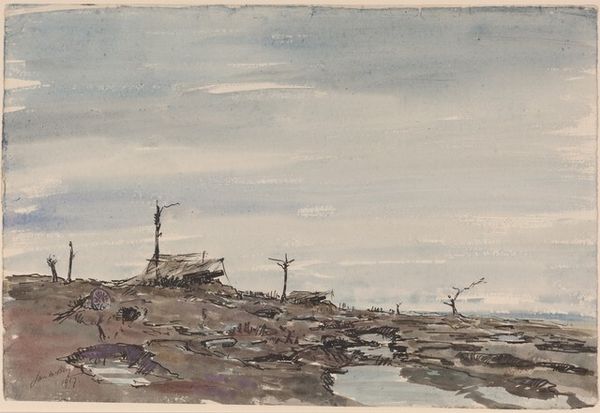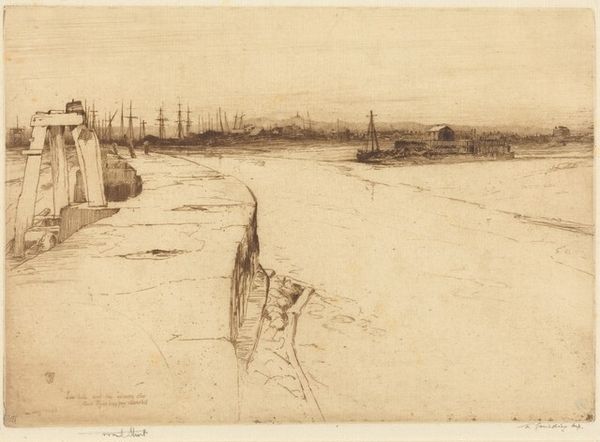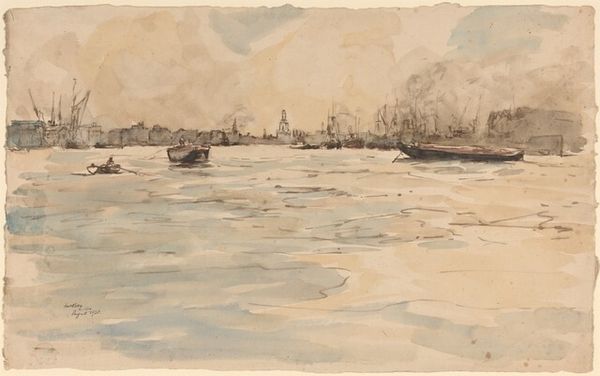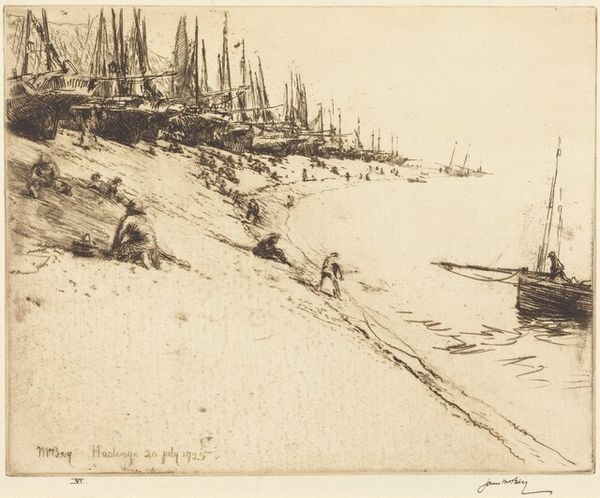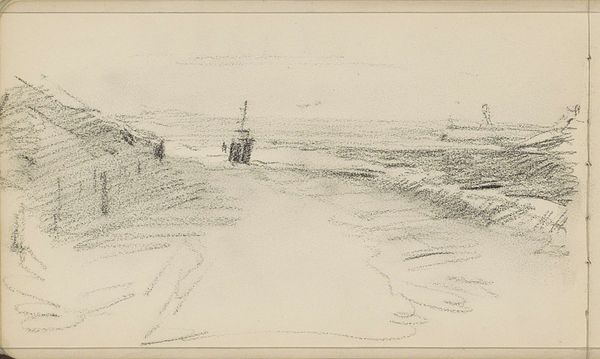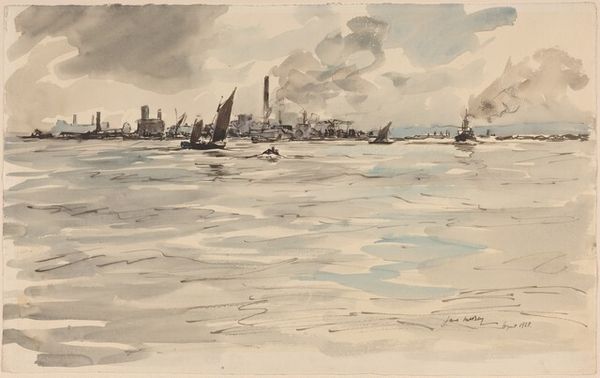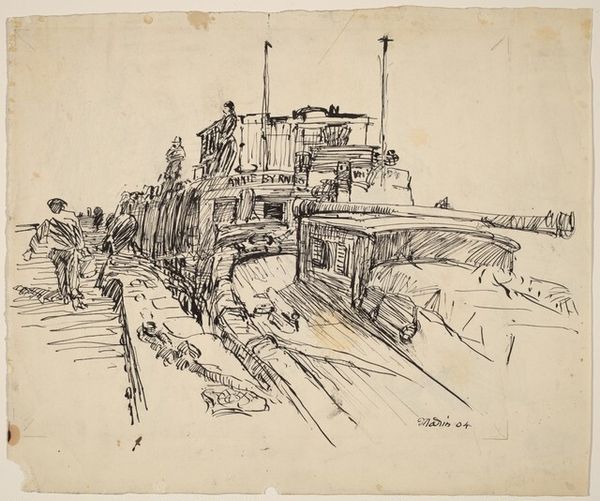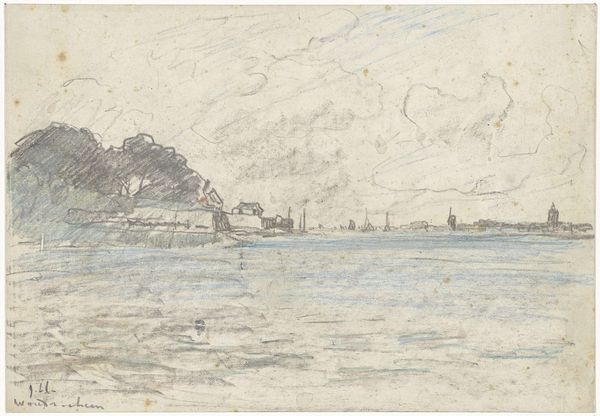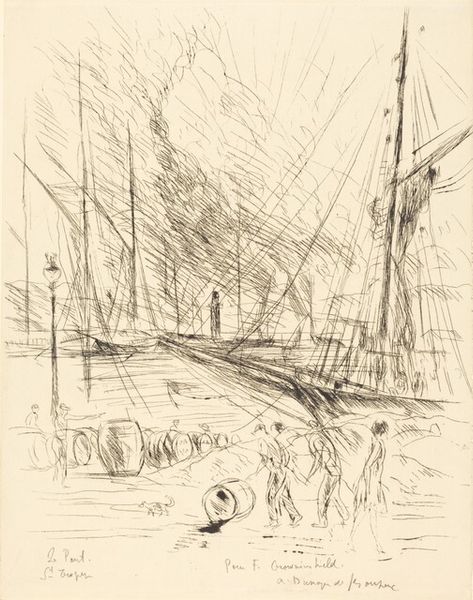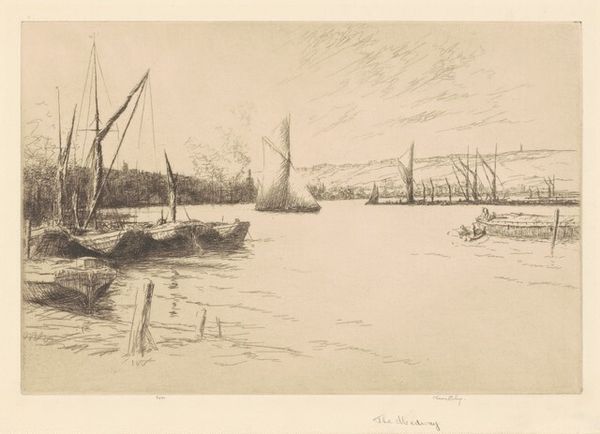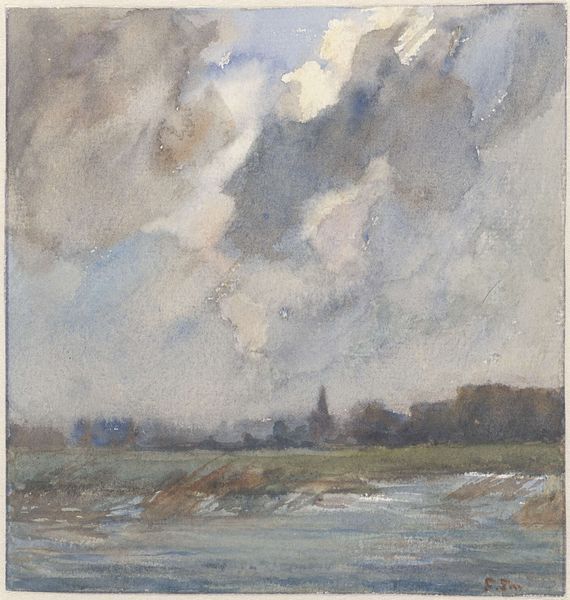
Dimensions: overall (approximate): 39 x 24.9 cm (15 3/8 x 9 13/16 in.)
Copyright: National Gallery of Art: CC0 1.0
Editor: This is James McBey's "Dave," a watercolour and ink drawing from 1928. I’m immediately struck by how much the light dominates the scene, almost washing out the forms of the boats and the shore. What do you see in this piece, from your perspective? Curator: The sparseness is really the point, isn’t it? This image provides an interesting lens through which we might look at the legacy of British maritime power and its slow decline in the interwar period. The location is undoubtedly a working port, but the emphasis is on leisure, a picturesque quality; any suggestion of active industry is missing, reflecting anxieties and shifting power dynamics during that era. Editor: That's a fascinating reading. I hadn't thought about it that way, focused more on its apparent simplicity. But now that you mention it, there's almost a melancholic quality. Do you think the choice of watercolor plays into this interpretation at all? Curator: Absolutely. Watercolor, particularly en plein air, allowed artists like McBey to capture fleeting moments, immediate impressions, which links into wider Post-Impressionist practices. It emphasizes spontaneity, informality, and individuality. McBey had worked as a war artist during WW1, so here we also get this reflective sentiment from a world war that questioned British sovereignty. But perhaps, there are additional political points here too: who "Dave" may have been, for instance, what socio-political circles the person may have occupied… Editor: Wow, that provides a completely new frame to understand McBey’s choices. Curator: The painting's historical background influences how the artwork is interpreted, which brings me to your initial impression and the artist’s social commentary on British power. I learned something from it myself!
Comments
No comments
Be the first to comment and join the conversation on the ultimate creative platform.
